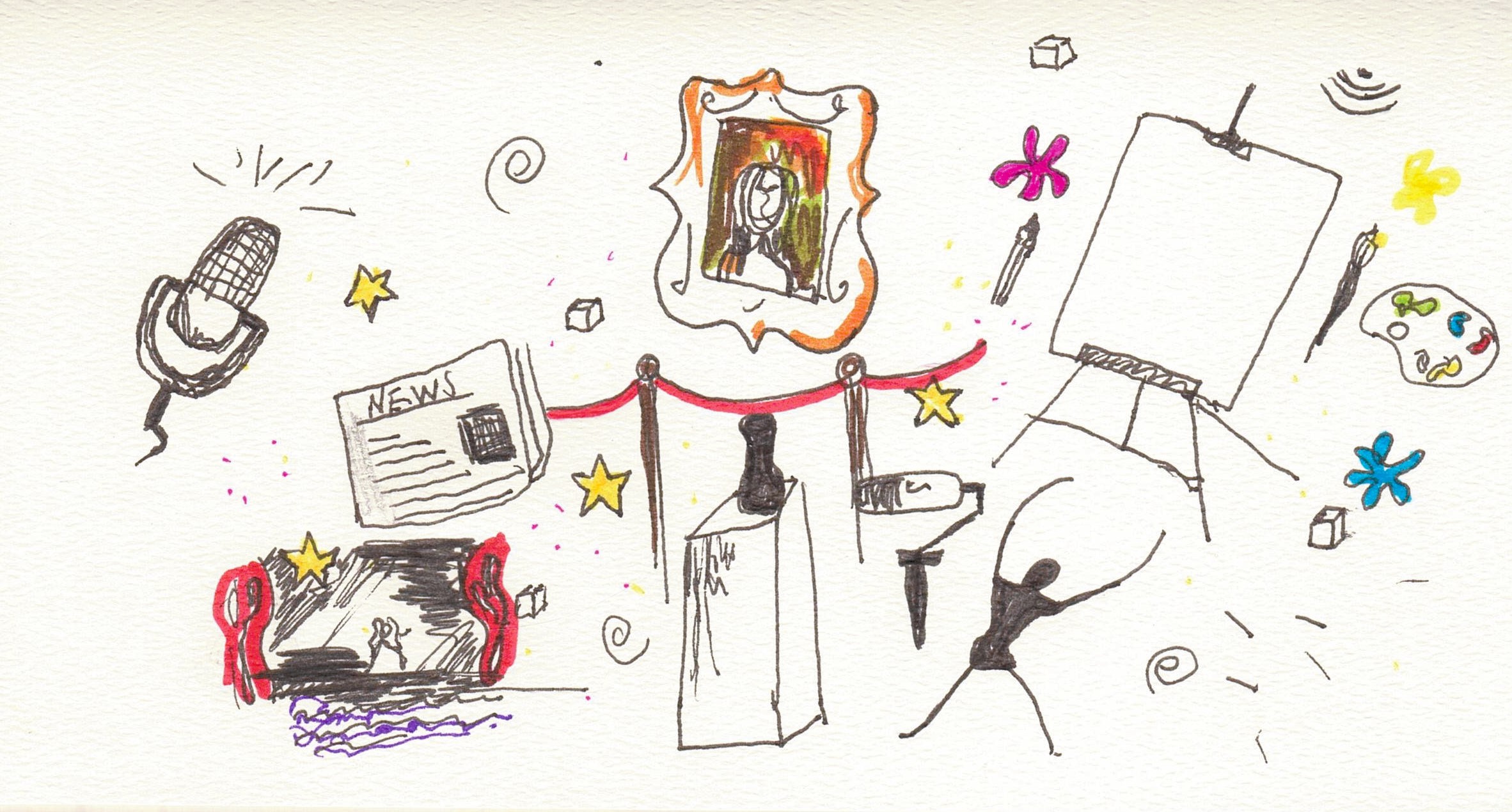Changing the culture of representation for contemporary artists
Benjamin J. Allard, BA Concordia Communication Studies alumnus, former research assistant and Art Matters curator, currently runs Radio Atelier for CIBL 101.5. Radio Atelier a podcast about local artists and current exhibitions in the greater Montreal area, and Quebec at large.
Allard recently put forth a change.org petition, as part of the INVISIBLES group, to highlight his concerns with arts representation in the media. INVISIBLES is specifically asking Radio-Canada to rethink their approaches to coverage of artists and arts events.
The petition, which now holds 10,572 signatures (and counting) is in French, and begins as follows; “we would like to draw your attention to the fact that the coverage of the visual arts on Radio-Canada contravenes your journalistic standards and practices by not respecting the principles of equity, impartiality and integrity.” Its clarity and strong language demand attention.
“INVISIBLES is an umbrella organization for people and institutions interested in the subject of visual art representation in the media,” said Allard.“It’s super new, they had a meeting in Quebec and we’ll have our first meetings in Montreal [soon].”
The petition has also made headway with the Canadian Radio-television and Telecommunications Commission (CRTC), which opened a public platform, from Nov. 25 to Feb. 20, where individuals and collectives had the opportunity to suggest ideas and provide feedback on CBC/Radio-Canada programming as they renew their broadcasting licences, which expires on Aug. 31.
“We want to make sure that the content produced and distributed by CBC/Radio-Canada reflects the diversity of Canada’s population, while meeting its needs in both official languages,” read the platform. The forum will hold and record a public hearing on May 25 in Ottawa to further address the issue of representation.
Allard, along with a team representing INVISIBLES, was invited to meet with Radio-Canada on Feb. 20 to discuss their demands. They proposed a document of suggested practices, which was received well by Société Radio Canada/Canadian Broadcasting Corporation (SRC/CBC), L’Association des galeries d’art contemporain (AGAC) and the Artist-Run Centres and Collectives Conference (ARCA). However, SRC/CBC explained that contemporary artists need better press relations in order to receive accurate representation.
“There are some projects on their way to create something to help at that level, but nothing is confirmed,” said Allard. “AGAC and ARCA had things to say about that, it’s not something really new they told us. However, they also offered to meet radio producers, which (according to them), they never did before. It is very generous and it’s the sign that it’s the beginning of a dialogue.”
But, if pre-existing government-funded arts programmes, in and of themselves, are not exploring diverse audiences, how can we expect the media to do the same?
Since its conception, the petition has also attracted the attention of MAtv’s “Mise à Jour Montréal” who invited Louise Déry, the director of UQAM’s art gallery, to discuss the issue.
In a segment of Feb. 17’s episode, Déry reflects on how art writers for The New Yorker, The New York Times and The LA Times attend art schools’ graduating exhibitions to get a sense of emerging artists. Quebec media, on the other hand, doesn’t do that.
In most of Quebec’s newspapers, the arts section has been merged with culture, leading coverage to typically include generally inaccessible events, such operas, plays and symphonies. Rarely do they immerse themselves in art galleries outside of Montreal’s larger cultural institutions.
Allard argues that it is always the same artists who are put forward on the Quebec scene, and this way of thinking starts in university.
Allard attended Concordia’s MFA Open studios on Feb. 19 and noticed that all their visiting artists were from Montreal. “This is unacceptable,” he said. “I think that [the] university should strive to create new networks and this passes by inviting people outside current networks.”
On their social media platforms, INVISIBLES showcases a Quebecois artist or art collective a day for a project called 366 jours/366 artistes. Among the 366 artists are multi-disciplinary, video, performance and screen printing artists like Rachel Echenberg, Marc-Antoine K. Phaneuf and Dominique Pétrin. Also featured in the project are some that are well represented, such as sculptor David Altmejd and Concordia Studio Arts professor, painter Janet Werner. Both artists have pieces at the Musée d’Art Contemporain in Montreal and the Musée national des beaux-arts in Quebec.
Tune in to Radio Atelier on CIBL 101.5 on Mondays at 6 p.m. for more from Allard, or find them wherever you get your podcasts. For more information, or to listen/download episodes online visit www.radioatelier.ca/
